A close relative of the Amazon river dolphin in marine deposits: a new Iniidae from the late Miocene of Angola
- PMID: 30225172
- PMCID: PMC6139015
- DOI: 10.7717/peerj.5556
A close relative of the Amazon river dolphin in marine deposits: a new Iniidae from the late Miocene of Angola
Abstract
Background: A few odontocetes (echolocating toothed cetaceans) have been able to independently colonize freshwater ecosystems. Although some extant species of delphinids (true dolphins) and phocoenids (porpoises) at least occasionally migrate upstream of large river systems, they have close relatives in fully marine regions. This contrasts with the three odontocete families only containing extant species with a strictly freshwater habitat (Iniidae in South America, the recently extinct Lipotidae in China, and Platanistidae in southeast Asia). Among those, the fossil record of Iniidae includes taxa from freshwater deposits of South America, partly overlapping geographically with the extant Amazon river dolphin Inia geoffrensis, whereas a few marine species from the Americas were only tentatively referred to the family, leaving the transition from a marine to freshwater environment poorly understood.
Methods: Based on a partial odontocete skeleton including the cranium, discovered in late Miocene (Tortonian-Messinian) marine deposits near the estuary of the Cuanza River, Angola, we describe a new large iniid genus and species. The new taxon is compared to other extinct and extant iniids, and its phylogenetic relationships with the latter are investigated through cladistic analysis.
Results and discussion: The new genus and species Kwanzacetus khoisani shares a series of morphological features with Inia geoffrensis, including the combination of a frontal boss with nasals being lower on the anterior wall of the vertex, the laterally directed postorbital process of the frontal, the anteroposterior thickening of the nuchal crest, and robust teeth with wrinkled enamel. As confirmed (although with a low support) with the phylogenetic analysis, this makes the new taxon the closest relative of I. geoffrensis found in marine deposits. The geographic provenance of K. khoisani, on the eastern coast of South Atlantic, suggests that the transition from the marine environment to a freshwater, Amazonian habitat may have occurred on the Atlantic side of South America. This new record further increases the inioid diversity during the late Miocene, a time interval confirmed here as the heyday for this superfamily. Finally, this first description of a Neogene cetacean from inland deposits of western sub-Saharan Africa reveals the potential of this large coastal area for deciphering key steps of the evolutionary history of modern cetaceans in the South Atlantic.
Keywords: Amazon river dolphin; Angola; Cetacea; Iniidae; Inioidea; Kwanza basin; late Miocene.
Conflict of interest statement
The authors declare there are no competing interests.
Figures
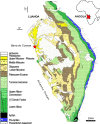




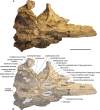

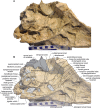

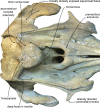
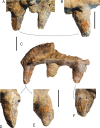

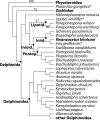
References
-
- Aguirre-Fernández G, Mennecart B, Sánchez-Villagra MR, Sánchez R, Costeur L. A dolphin fossil ear bone from the northern Neotropics_insights into habitat transitions in iniid evolution. Journal of Vertebrate Paleontology. 2017;37:e1315817. doi: 10.1080/02724634.2017.1315817. - DOI
-
- Allen GM. A fossil river dolphin from Florida. Bulletin of the Museum of Comparative Zoology. 1941;89:1–8.
-
- Andrews C. A description of new species of zeuglodont and of leathery turtle from the Eocene of southern Nigeria. Journal of Zoology. 1919;89:309–319.
-
- Best RC, Da Silva VMF. Amazon river dolphin, Boto. Inia geoffrensis (de Blainville, 1817) In: Ridgway SH, Harrison R, editors. Handbook of marine mammals, 4: river dolphins and the larger toothed whales. Academic Press; London: 1989. pp. 1–23.
-
- Bianucci G, Lambert O, Post K. A high diversity in fossil beaked whales (Odontoceti, Ziphiidae) recovered by trawling from the sea floor off South Africa. Geodiversitas. 2007;29:5–62.
LinkOut - more resources
Full Text Sources
Other Literature Sources
Research Materials

